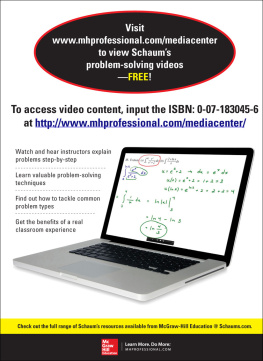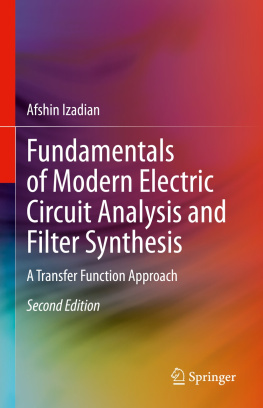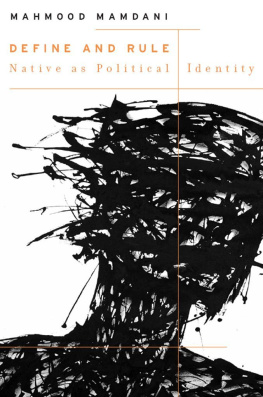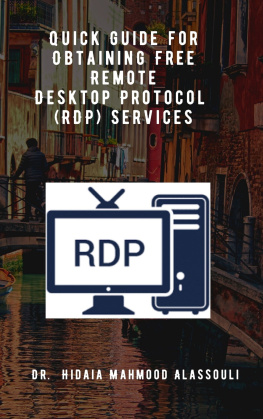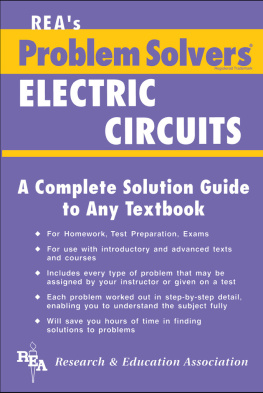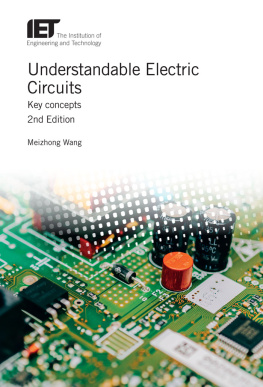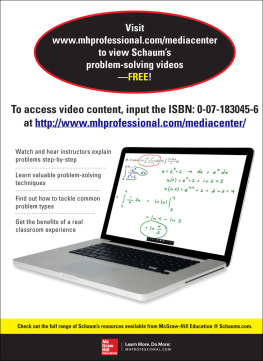Mahmood Nahvi - Electric Circuits
Here you can read online Mahmood Nahvi - Electric Circuits full text of the book (entire story) in english for free. Download pdf and epub, get meaning, cover and reviews about this ebook. year: 2013, publisher: McGraw-Hill Education, genre: Science / Computer. Description of the work, (preface) as well as reviews are available. Best literature library LitArk.com created for fans of good reading and offers a wide selection of genres:
Romance novel
Science fiction
Adventure
Detective
Science
History
Home and family
Prose
Art
Politics
Computer
Non-fiction
Religion
Business
Children
Humor
Choose a favorite category and find really read worthwhile books. Enjoy immersion in the world of imagination, feel the emotions of the characters or learn something new for yourself, make an fascinating discovery.

- Book:Electric Circuits
- Author:
- Publisher:McGraw-Hill Education
- Genre:
- Year:2013
- Rating:3 / 5
- Favourites:Add to favourites
- Your mark:
- 60
- 1
- 2
- 3
- 4
- 5
Electric Circuits: summary, description and annotation
We offer to read an annotation, description, summary or preface (depends on what the author of the book "Electric Circuits" wrote himself). If you haven't found the necessary information about the book — write in the comments, we will try to find it.
Electric Circuits — read online for free the complete book (whole text) full work
Below is the text of the book, divided by pages. System saving the place of the last page read, allows you to conveniently read the book "Electric Circuits" online for free, without having to search again every time where you left off. Put a bookmark, and you can go to the page where you finished reading at any time.
Font size:
Interval:
Bookmark:
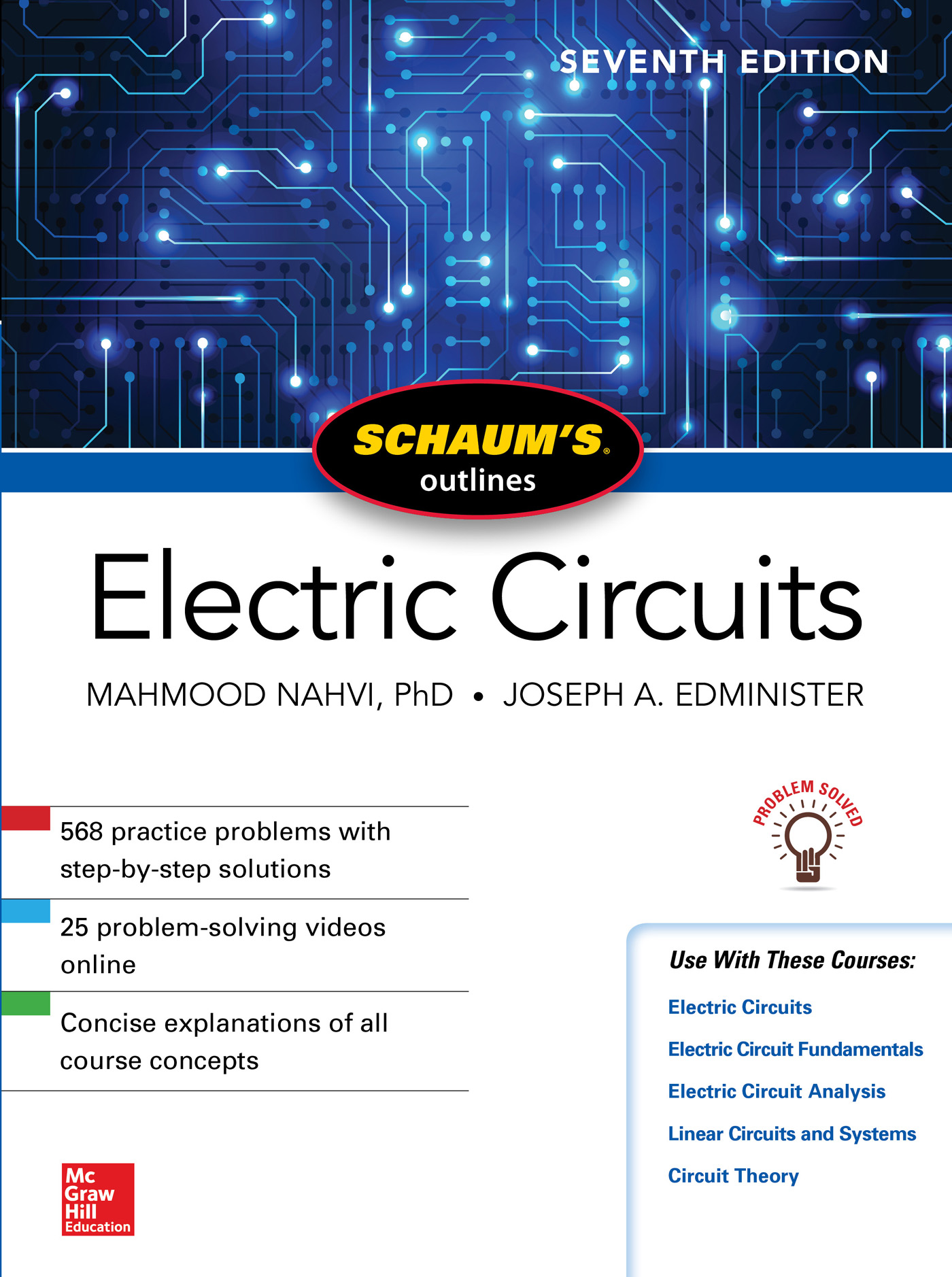
 Copyright 2018 by McGraw-Hill Education. All rights reserved. Printed in the United States of America. Except as permitted under the United States Copyright Act of 1976, no part of this publication may be reproduced or distributed in any form or by any means, or stored in a data base or retrieval system, without the prior written permission of the publisher. ISBN: 978-1-260-01197-5
Copyright 2018 by McGraw-Hill Education. All rights reserved. Printed in the United States of America. Except as permitted under the United States Copyright Act of 1976, no part of this publication may be reproduced or distributed in any form or by any means, or stored in a data base or retrieval system, without the prior written permission of the publisher. ISBN: 978-1-260-01197-5MHID: 1-260-01197-6 The material in this eBook also appears in the print version of this title: ISBN: 978-1-260-01196-8, MHID: 1-260-01196-8. eBook conversion by codeMantra
Version 1.0 All trademarks are trademarks of their respective owners.
Rather than put a trademark symbol after every occurrence of a trademarked name, we use names in an editorial fashion only, and to the benefit of the trademark owner, with no intention of infringement of the trademark. Where such designations appear in this book, they have been printed with initial caps. McGraw-Hill Education eBooks are available at special quantity discounts to use as premiums and sales promotions or for use in corporate training programs. To contact a representative, please visit the Contact Us page at www.mhprofessional.com. Trademarks: McGraw-Hill Education, the McGraw-Hill Education logo, Schaums, and related trade dress are trademarks or registered trademarks of McGraw-Hill Education and/or its affiliates in the United States and other countries, and may not be used without written permission. All other trademarks are the property of their respective owners.
McGraw-Hill Education is not associated with any product or vendor mentioned in this book. TERMS OF USE This is a copyrighted work and The McGraw-Hill Companies, Inc. (McGraw-Hill) and its licensors reserve all rights in and to the work. Use of this work is subject to these terms. Except as permitted under the Copyright Act of 1976 and the right to store and retrieve one copy of the work, you may not decompile, disassemble, reverse engineer, reproduce, modify, create derivative works based upon, transmit, distribute, disseminate, sell, publish or sublicense the work or any part of it without McGraw-Hills prior consent. You may use the work for your own noncommercial and personal use; any other use of the work is strictly prohibited.
Your right to use the work may be terminated if you fail to comply with these terms. THE WORK IS PROVIDED AS IS. McGRAW-HILL AND ITS LICENSORS MAKE NO GUARANTEES OR WARRANTIES AS TO THE ACCURACY, ADEQUACY OR COMPLETENESS OF OR RESULTS TO BE OBTAINED FROM USING THE WORK, INCLUDING ANY INFORMATION THAT CAN BE ACCESSED THROUGH THE WORK VIA HYPERLINK OR OTHERWISE, AND EXPRESSLY DISCLAIM ANY WARRANTY, EXPRESS OR IMPLIED, INCLUDING BUT NOT LIMITED TO IMPLIED WARRANTIES OF MERCHANTABILITY OR FITNESS FOR A PARTICULAR PURPOSE. McGraw-Hill and its licensors do not warrant or guarantee that the functions contained in the work will meet your requirements or that its operation will be uninterrupted or error free. Neither McGraw-Hill nor its licensors shall be liable to you or anyone else for any inaccuracy, error or omission, regardless of cause, in the work or for any damages resulting therefrom. McGraw-Hill has no responsibility for the content of any information accessed through the work.
Under no circumstances shall McGraw-Hill and/or its licensors be liable for any indirect, incidental, special, punitive, consequential or similar damages that result from the use of or inability to use the work, even if any of them has been advised of the possibility of such damages. This limitation of liability shall apply to any claim or cause whatsoever whether such claim or cause arises in contract, tort or otherwise.
This book is designed for use as a textbook for a first course in circuit analysis or as a supplement to standard texts and can be used by electrical engineering students as well as other engineering and technology students. Emphasis is placed on the basic laws, theorems, and problem-solving techniques that are common to most courses. The subject matter is divided into 17 chapters covering duly recognized areas of theory and study. The chapters begin with statements of pertinent definitions, principles, and theorems together with illustrative examples. This is followed by sets of supplementary problems. The problems cover multiple levels of difficulty.
Some problems focus on fine points and help the student to better apply the basic principles correctly and confidently. The supplementary problems are generally more numerous and give the reader an opportunity to practice problem-solving skills. Answers are provided with each supplementary problem. The book begins with fundamental definitions, circuit elements including dependent sources, circuit laws and theorems, and analysis techniques such as node voltage and mesh current methods. These theorems and methods are initially applied to DC-resistive circuits and then extended to RLC circuits by the use of impedance and complex frequency. The op amp examples and problems in have been selected carefully to illustrate simple but practical cases that are of interest and importance to future courses.
The subject of waveforms and signals is treated in a separate chapter to increase the students awareness of commonly used signal models. Circuit behavior such as the steady state and transient responses to steps, pulses, impulses, and exponential inputs is discussed for first-order circuits in . Finally, two appendixes provide a useful summary of complex number systems and matrices and determinants. This book is dedicated to our students and students of our students, from whom we have learned to teach well. To a large degree, it is they who have made possible our satisfying and rewarding teaching careers. We also wish to thank our wives, Zahra Nahvi and Nina Edminister, for their continuing support.
The contribution of Reza Nahvi in preparing the current edition as well as previous editions is also acknowledged. MAHMOOD NAHVI
JOSEPH A. EDMINISTER
In the area of engineering education, he has developed computer modules for electric circuits, signals, and systems which improve teaching and learning of the fundamentals of electrical engineering. In addition, he is coauthor of
Font size:
Interval:
Bookmark:
Similar books «Electric Circuits»
Look at similar books to Electric Circuits. We have selected literature similar in name and meaning in the hope of providing readers with more options to find new, interesting, not yet read works.
Discussion, reviews of the book Electric Circuits and just readers' own opinions. Leave your comments, write what you think about the work, its meaning or the main characters. Specify what exactly you liked and what you didn't like, and why you think so.

